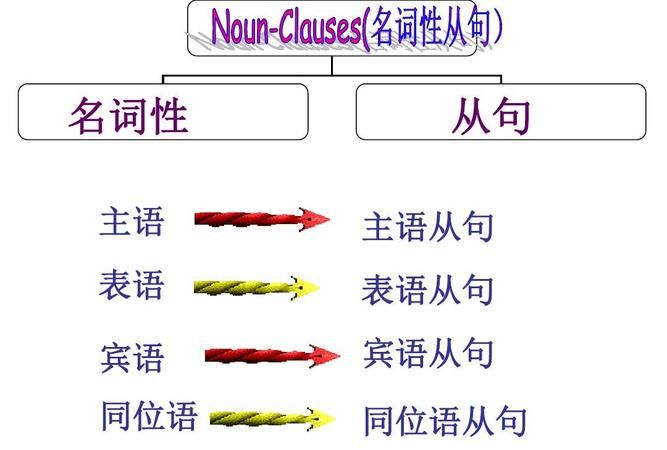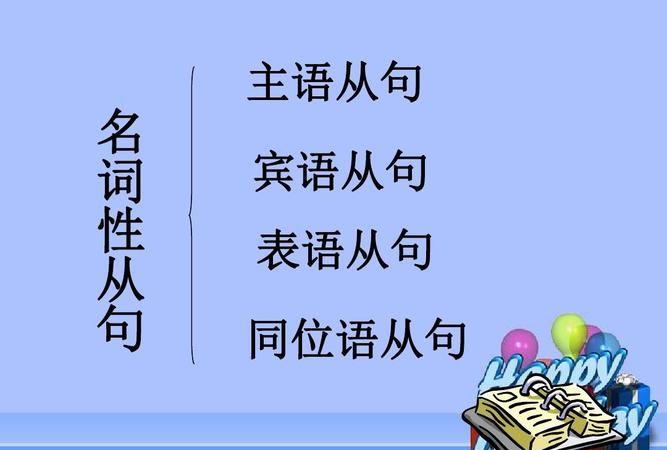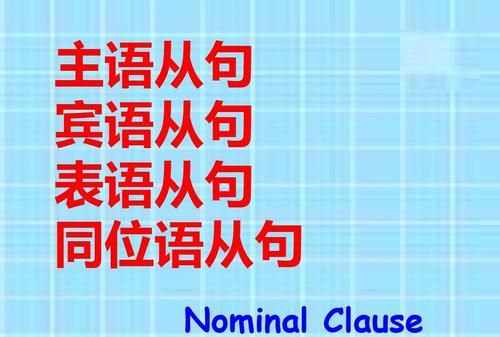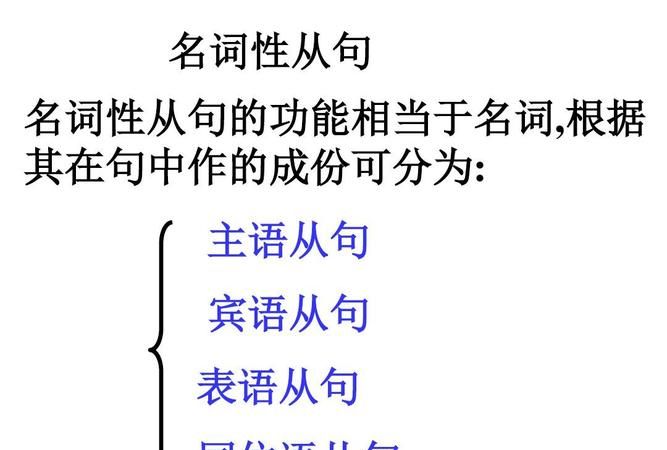本文目录
同位语的用法
同位语从句是指在复合句中跟在名词后面,充当名词的同位语的从句,它是对前面的名词起到解释和说明的作用。同位语从句常位于news,idea,fact,thought,problem,answer,belief,possibility,plan,suggestion,promise,teport,question,truth,proof,order,hope,information...等的名词后面。
同位语部分是个句子,就是同位语从句,这种用法比较"固定",把关键的几个词背下来.
下面这个材料供参考.
===========================
一、在复合句中用作同位语的从句叫同位语从句。它一般跟在某些名词后面,用以说明该名词表示的具体内容。如:
I heard the news that our team had won.我听到了我们队获胜的消息。
I had no idea that you were here.我不知道你在这里。
二、可以跟同位语从句的名词通常有new,idea,fact,promise,question,doubt,thought,hope,message,suggestion,word(消息),possibility等。如:
I’ve come from Mr wang with a message that he won’t be able to see you this afternoon. 我从王先生那里来,他让我告诉你他今天下午不能来看你了。
三、英语中引导同位语从句的词通有连词 that,whether,连接副词 how,when,where等。(注:if,which 不能引导同位语从句。)如:
l have no idea When he will be back.我不知道他什么时候回来。
He must answer the question whether he agrees to if or not.
他必须回答他是否同意这样一个问题。
四、有时同位语从句可以不紧跟在说明的名词后面,而被别的词隔开。 如:
Several years later,word came that Napoleon himself was coming to inspect them.
几年以后,有消息传来说拿破仑要亲自视 察他们。
The thought came to him that maybe the enemy had fled the city.
他突然想起可能敌人已经逃出城了。
五、同位语从句与定语从句的区别。
1、同位语从句与前面的名词是同位关系,即说明它前面名词的内容;而定语从句与前面的名词是修饰与被修饰关系,即限定它前面的名词范围,或补充一些情况。如:
The news that l hove passed the exam is true.我通过了考试这一消息是真的。
(同位语从句,即从句所表达的意思就是前面名词的内容。)
The news that he told me just now is true.他刚才告诉我的消息是真的。
(定语从句,从句对前面名词起修饰限制作用,即“他告诉我的”那个消息,而不是别的消息。)
2、引导同位语从句的that是连词,在从句中不充当任何成份,而引导定语从句的that是关系代词,除起连接作用外,还在从句中充当主语、宾语或表语等。如:
The idea that computers can recognize human voices surprises many people.
计算机能够识别人的声音的想法使许多人感到惊奇。(that在从句中不充当任何成份。)
The idea that he gave surprises many people.他提出的观点令许多人感到吃惊。
(that在从句中作gave的宾语。)



同位语从句用法
一、理解同位语从句的含义,把握同位语从句的实质
在主从复合句中作同位语的从句称为同位语从句。同位语从句一般用that,whether等词引导,常放在fact,news,idea,truth,hope,problem,information等名词后面,说明该名词的具体内容。换言之,同位语从句和所修饰的名词在内容上为同一关系。
例:The news that they had won the game soon spread over the whole school.他们比赛获胜的消息很快传遍了整个学校。
析:they had won the game说明The news的全部内容,因此该句为同位语从句。
二、正确运用同位语从句的引导词,准确把握同位语从句
1.如同位语从句意义完整,应用that引导同位语从句。
例:The general gave the order that the soldiers should cross the river at once.将军下达了战士们立即过河的命令。
析:the soldiers should cross the river at once是the order的全部内容,且意义完整,因此应用that引导同位语从句。
2.如同位语从句意义不完整,需增加"是否"的含义,应用whether引导同位语从句。
例:We'll discuss the problem whether the sports meeting will be held on time.我们将讨论运动会是否会如期举行的问题。
析:the sports meeting will be held on time意义不完整,应加"是否"的含义才能表达the problem的全部内容,因此应用whether引导同位语从句。
3.如同位语从句意义不完整,需增加"什么时候"、"什么地点"、"什么方式"等含义,应用when,where,how等词引导同位语从句。
例1:I have no idea when he will be back.
析:he will be back意义不完整,应加"什么时候"的含义才能表达idea的全部内容,因此应用when引导同位语从句。
例2:I have no impression how he went home,perhaps by bike.
析:he went home意义不完整,应加"如何"的含义才能表达impression的全部内容,因此应用how引导同位语从句。
三、把握同位语从句和定语从句的区别,明确同位语从句和相似从句的界限
同位语从句和定语从句相似,都放在某一名词或代词后面,但同位语从句不同于定语从句。同位语从句对名词加以补充说明,是名词全部内容的体现,且名词和同位语从句的引导词均不在从句中作成分;定语从句对名词加以限制,是名词内容的修饰性定语,且名词和定语从句的引导词均在从句中作成分。
例1:Information has been put forward ____ more middle school graduates will be admitted into universities.(NMET2001上海)
A.while B.that C.when D.as
析:答案为B。more middle school graduates will be admitted into universities是Information的内容,且Information不在从句中作成分,所以该句为同位语从句。应将该句区别于:
It is said that more middle school graduates will be admitted into universities,this is the information ____ has been put forward.
A.what B.that C.when D.as
析:答案为B。that has been put forward为information的修饰性定语,且information在从句中作主语,所以该句为定语从句。
例2:She heard a terrible noise,____ brought her heart into her mouth.(MET91)
A.it B.which C.this D.that
析:答案为B。分析语境含义、句子结构和句子成分可知,该句为非限制性定语从句,先行词为a terrible noise,且它在从句中作主语。应将该句区别于:
I can't stand the terrible noise ____ she is crying loudly.
A.it B.which C.this D.that
析:答案为D。she is crying loudly是the terrible noise的内容,且the terrible noise不在从句中作成分,所以该句为同位语从句。

以上就是关于同位语从句可以放在名词前 ,同位语的用法的全部内容,以及同位语从句可以放在名词前吗 的相关内容,希望能够帮到您。

